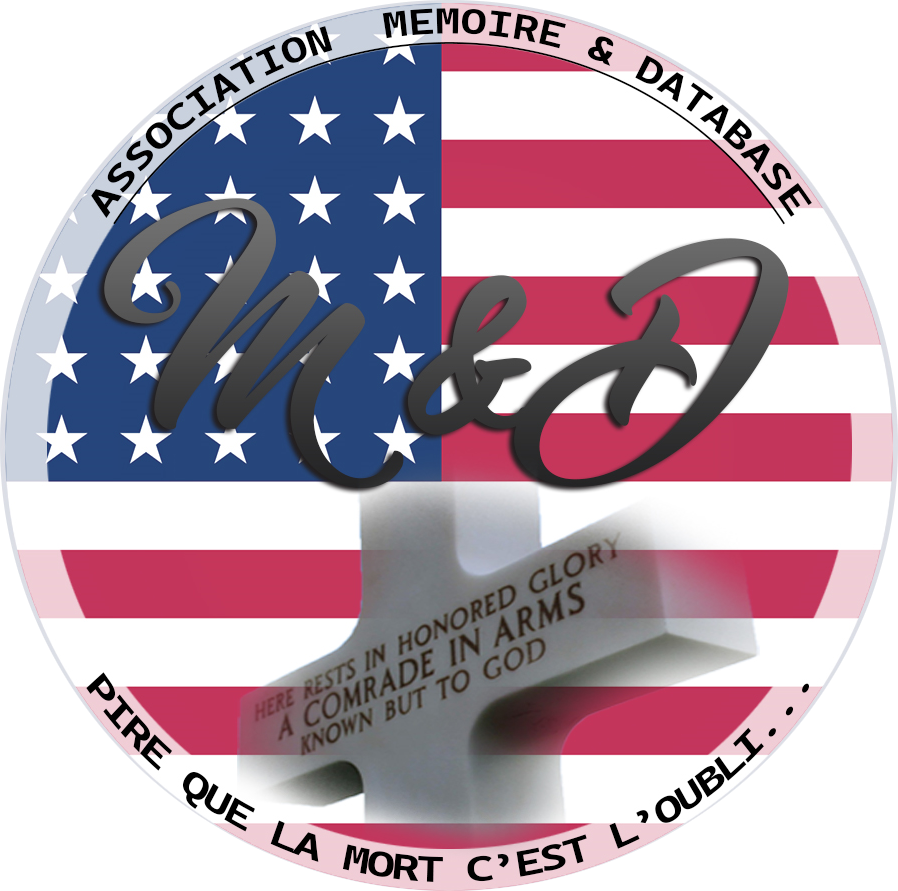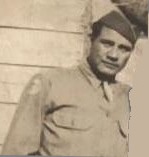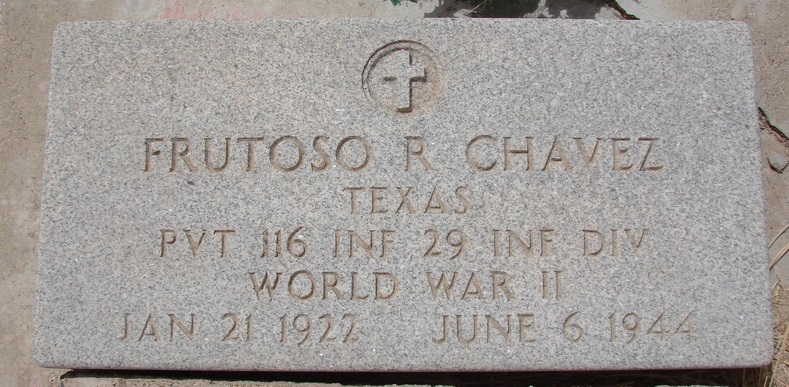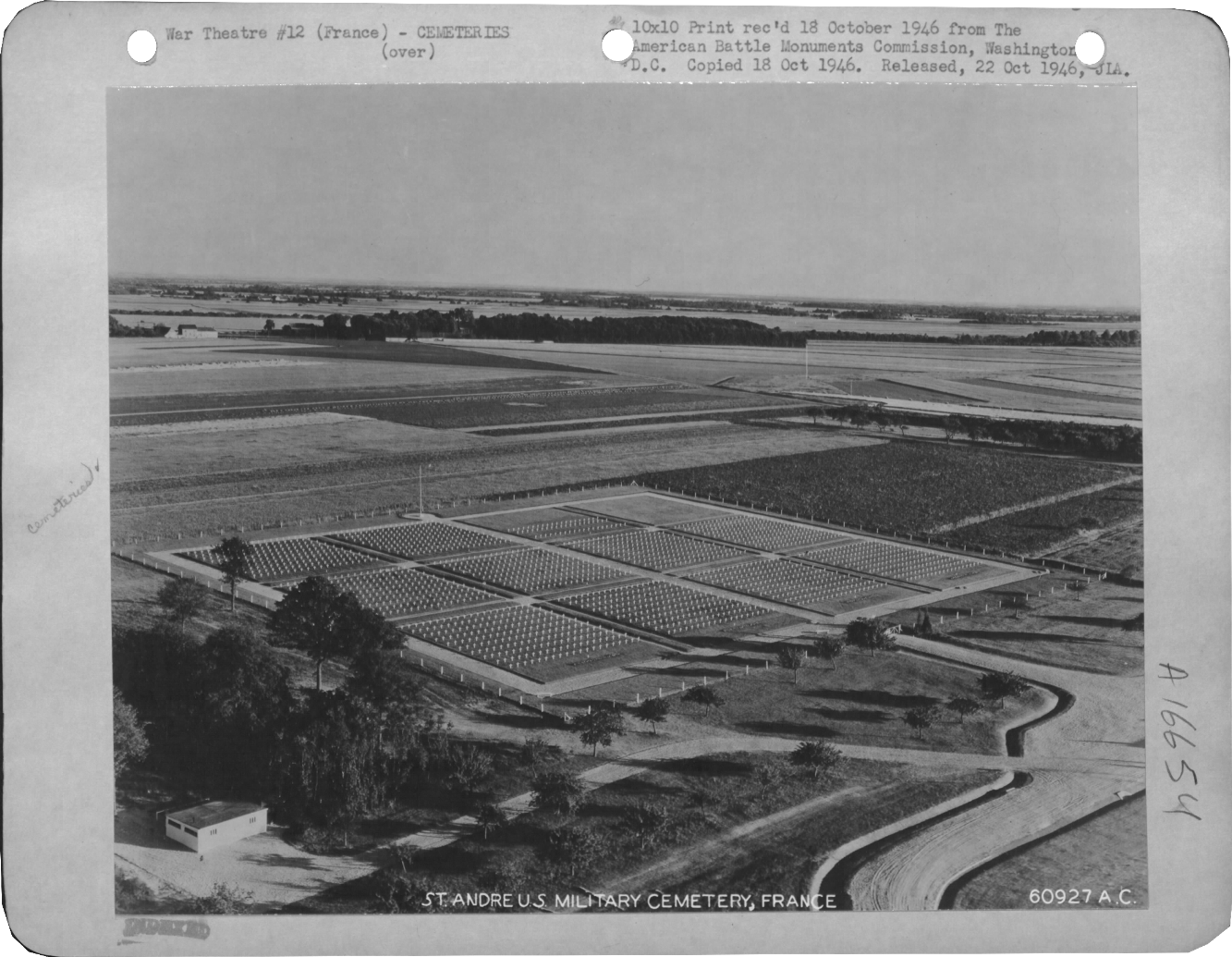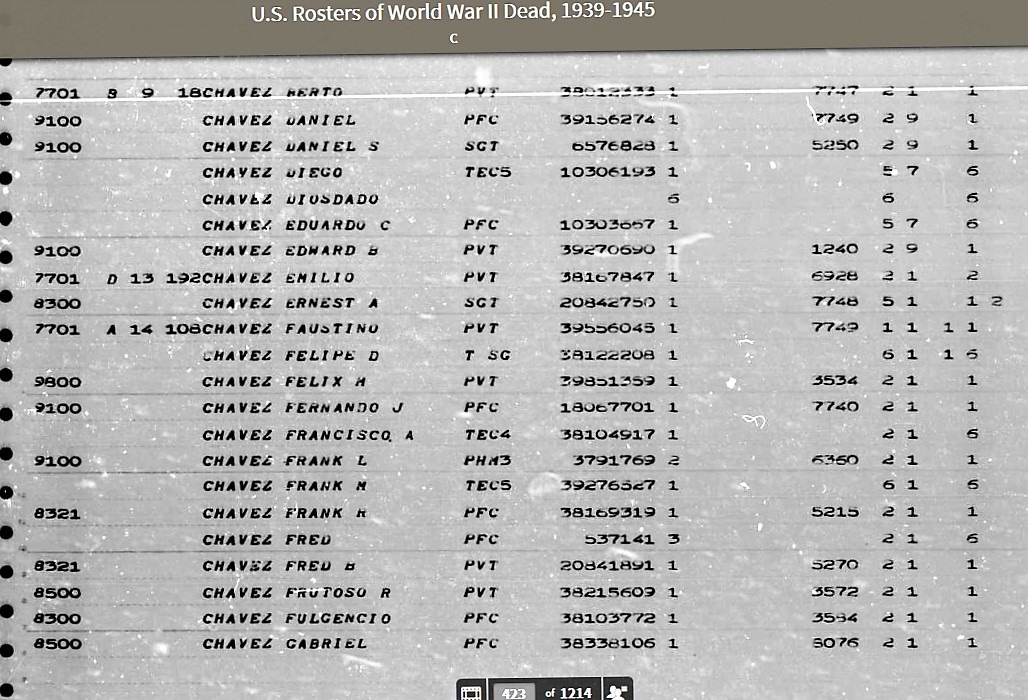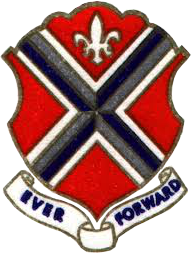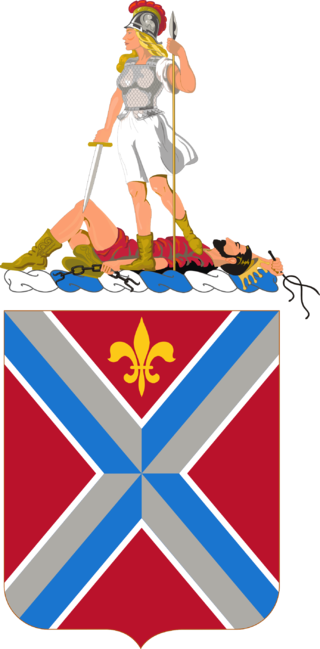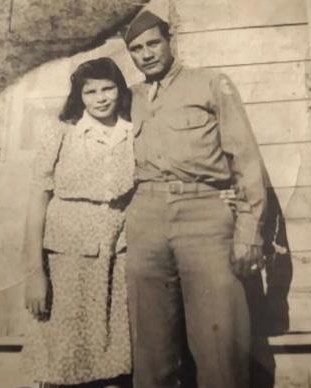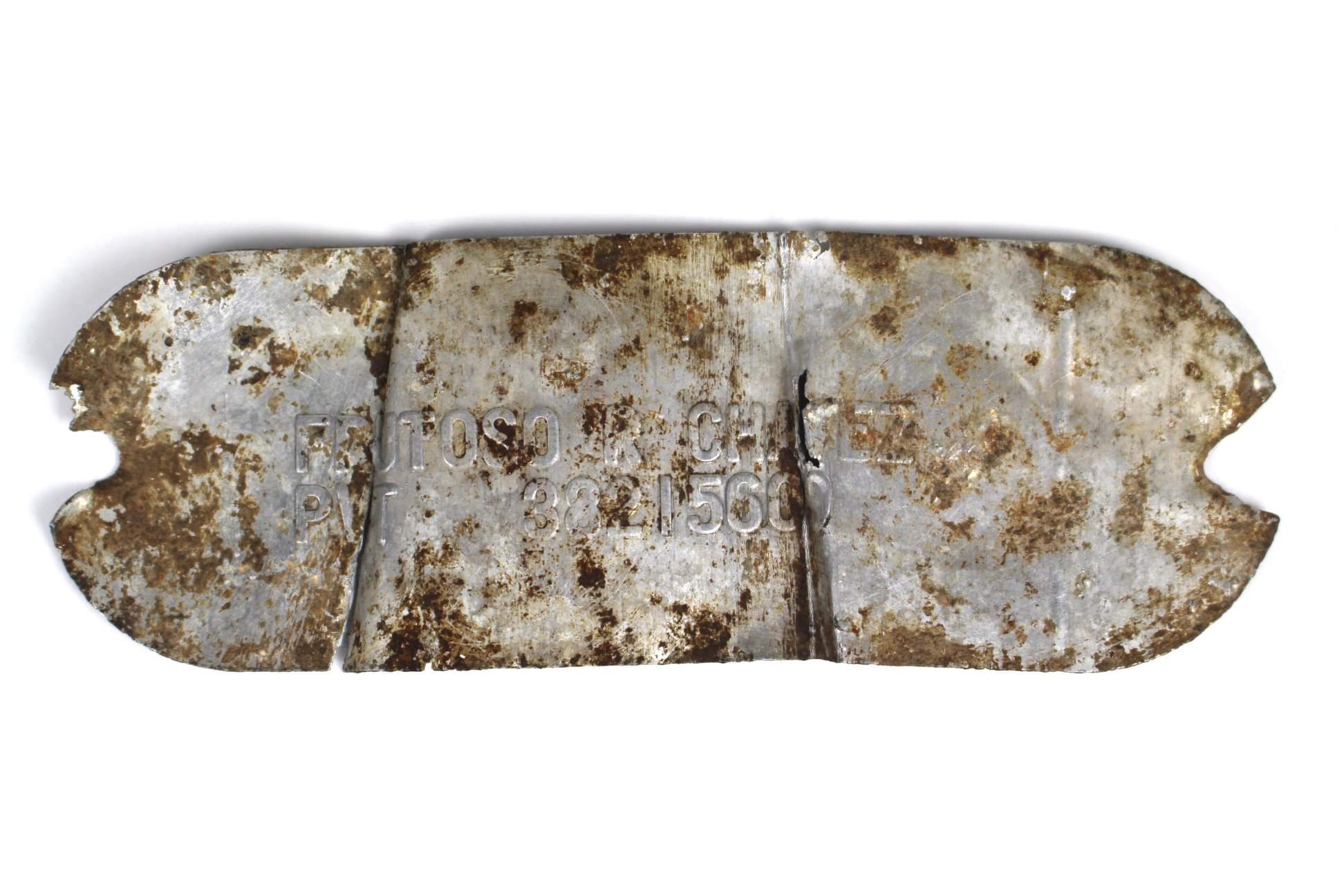|
Frutoso R. CHAVEZ
| ||||||||||||||||||||||||
|---|---|---|---|---|---|---|---|---|---|---|---|---|---|---|---|---|---|---|---|---|---|---|---|---|
|
Source : Cbs7.com
| ||||||||||||||||||||||||
| NUMBER OF SERVICE | 38215609 | |||||||||||||||||||||||
| AGE | 22 yo | |||||||||||||||||||||||
| DATE OF BIRTH | 21 January 1922 Pecos TEXAS | |||||||||||||||||||||||
| ENLISTMENT STATE | TEXAS | |||||||||||||||||||||||
| FAMILY |
Spouse : Juana Fierro Son : Jesse Parents : Urbano & Ysabel R CHAVEZ Siblings : Manuela C, Thomas & Victoriano R. | |||||||||||||||||||||||
| RANK | Private | |||||||||||||||||||||||
| FONCTION | InfantryMan | |||||||||||||||||||||||
| JOB BEFORE ENLISTEMENT | Semiskilled construction occupations | 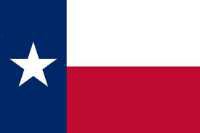 | ||||||||||||||||||||||
| DATE of ENLISTEMENT | 17 November 1942 Fort Bliss El Paso TEXAS | |||||||||||||||||||||||
| COMPANY | Company E | |||||||||||||||||||||||
| REGIMENT | 116th Infantry Regiment | |||||||||||||||||||||||
| DIVISION | 29th Infantry Division | |||||||||||||||||||||||
| DATE OF DEATH | 6 June 1944 |
Source : Diane & John | ||||||||||||||||||||||
| STATUS | KIA | |||||||||||||||||||||||
| PLACE OF DEATH | Omaha Beach | |||||||||||||||||||||||
| CEMETERY TEMPORARY |
CEMTERY TEMPORARY of St André N°3572
Source : Henri Rogister | |||||||||||||||||||||||
| CEMETERY |
SANTA ROSA CEMETERY
| |||||||||||||||||||||||
| DECORATION |
| |||||||||||||||||||||||
| ||||||||||||||||||||||||
| STORY | ||||||||||||||||||||||||
|
Source : Cbs7.com |
Source : Diane & John | |||||||||||||||||||||||
|
By Jakob Brandenburg | Publié: jeu 22h39, 06 juin 2019 A West Texas native who died storming the beaches of Normandy is being remembered on the 75th anniversary of D-Day. While writing a book about Mexican Americans who served during World War II, author Dave Gutierrez kept coming across the name Frutoso Chavez of Reeves County. “He is listed as one of the ones killed in action on Omaha Beach,” Gutierrez said. “On that morning, the 29th Infantry Division was one of the first units to hit the beaches. So they caught the brunt of the German enemy fire as they came ashore.” Chavez was born and raised in Pecos, where he married Juana Fierro. They had a baby boy named Jesse, who was only 11 months old when his father was killed on D-Day. “It’s something that stays in your heart and isn’t going to go away,” Jesse Chavez said. “I just want to hug him and kiss him and tell him I love him very much.” Jesse Chavez said he had a good step-father, but always missed the man who died serving his country. “I wish I could explain it, but it’s rough,” Chavez said. “I have a hard time when Father’s Day is coming, and I don’t have one. It was hard for me.” After being buried in Normandy, France for several years, Frutoso Chavez’s body was sent back to Pecos to be buried in the family plot. His Purple Heart has been passed down through generations. “I think all of those guys that were there are heroes,” Chavez, whose uncle Meliton also served, said. “Fighting for us. They had no choice and they had to go. There were the lucky ones, and some didn’t make it.” “Going back to Frutoso Chavez and all of the Mexican Americans who served during World War II,” Gutierrez said, “I think it’s very important that we tell their stories. Slowly those stories are being lost and I just want to make sure those stories are out there.” | ||||||||||||||||||||||||
Activated/Activé |
Normandy/Normandie |
| 3 Feb 1941 | Days of Combat/Jour de Combat 242 |
| Casualties/Victimes 20 620 | |
Entered Combat/Entré au combat |
|
| 6 Jun1944 D-Day | |
|
Commanding Generals/Commandants généraux Maj. Gen. Milton A. Reckord (Feb 41 - Jan 42) |
Campaigns/CampagnesNormandy (6 Jun 44 - 24 Jul 44)
|
PLAN DE ROUTE DE LA CAMPAGNE - CAMPAIGN ROUTE MAP |
|
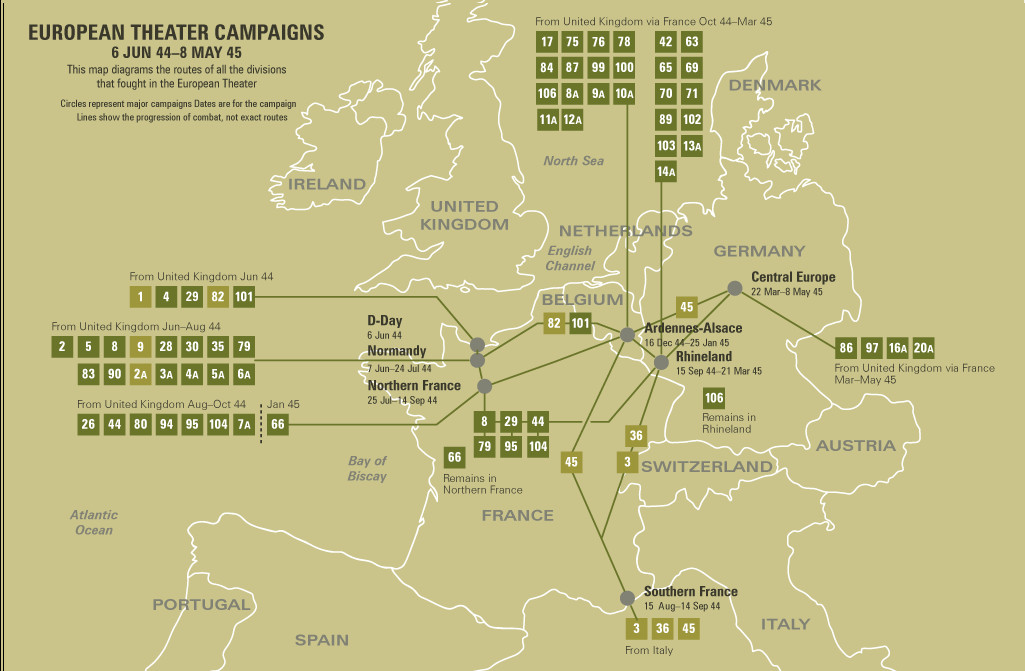 |
|
DIVISION CHRONICLEThe 29th Infantry Division trained in Scotland and England for the crosschannel invasion, October 1942-June 1944. Teamed with the 1st Division, a regiment of the 29th (116th Infantry) was in the first assault wave to hit the beaches at Normandy on D-day, 6 June 1944. Landing on Omaha Beach on the same day in the face of intense enemy fire, the Division soon secured the bluff tops and occupied Isigny, 9 June. The Division cut across the Elle River and advanced slowly toward St. Lo, fighting bitterly in the Normandy hedge rows. After taking St. Lo, 18 July 1944, the Division joined in the battle for Vire, capturing that strongly held city, 7 August. Turning west, the 29th took part in the assault on Brest, 25 August-18 September 1944. After a short rest, the Division moved to defensive positions along the Teveren-Geilenkirchen line in Germany and maintained those positions through October. (In mid-October the 116th Infantry took part in the fighting at the Aachen Gap.) On 16 November the Division began its drive to the Roer, blasting its way through Siersdorf, Setterich, Durboslar, and Bettendorf, and reaching the Roer by the end of the month. Heavy fighting reduced Julich Sportplatz and the Hasenfeld Gut, 8 December. From 8 December 1944 to 23 February 1945, the Division held defensive positions along the Roer and prepared for the offensive. The attack jumped off across the Roer, 23 February, and carried the Division through Julich, Broich, Immerath, and Titz, to Munchen-Gladbach, 1 March 1945. The Division was out of combat in March. In early April the 116th Infantry helped mop up in the Ruhr area. On 19 April 1945 the Division pushed to the Elbe and held defensive positions until 4 May. Meanwhile, the 175th Infantry cleared the Klotze Forest. After VE-day, the Division was on military government duty in the Bremen enclave. |
CHRONIQUE DE DIVISIONLa 29th Infantry Division s'entraîna en Ecosse et en Angleterre pour l'invasion crosschannel, d'octobre 1942 à juin 1944. En équipe avec la 1st Division, un régiment du 29th (116th Infantry) se trouvait dans la première vague d'assaut pour frapper les plages de Normandie. Le 6 juin 1944, débarquant à Omaha Beach, le même jour, face à un feu nourri de l'ennemi, la division s'empara bientôt des falaises et occupa Isigny, le 9 juin. La Division traversa la rivière Elle et s'avança lentement vers Saint-Lô, se battant amèrement dans les rangées de haies de Normandie. Après avoir pris St. Lo, le 18 juillet 1944, la division se joignit à la bataille de Vire pour s'emparer de cette ville fortement occupée, le 7 août. Tournant vers l'ouest, le 29 a pris part à l'assaut sur Brest, 25 août-18 septembre 1944. Après un court repos, la division a déménagé à des positions défensives le long de la ligne Teveren-Geilenkirchen en Allemagne et a maintenu ces positions jusqu'en octobre. (À la mi-octobre, le 116e régiment d'infanterie prit part aux combats à Aix-la-Chapelle.) Le 16 novembre, la division commença sa route vers la Roer, traversant Siersdorf, Setterich, Durboslar et Bettendorf, et atteignant la Roer par la fin du mois. Les combats intenses ont réduit Julich Sportplatz et le Hasenfeld Gut, le 8 décembre. Du 8 décembre 1944 au 23 février 1945, la division occupe des positions défensives le long de la Roer et se prépare à l'offensive. L'attaque a sauté à travers le Roer, le 23 février, et a porté la Division par l'intermédiaire de Julich, Broich, Immerath, et Titz, à Munchen-Gladbach, le 1er mars 1945. La Division était hors combat en mars. Au début du mois d'avril, le 116th Infantry a aidé à nettoyer la région de la Ruhr. Le 19 avril 1945, la division pousse vers l'Elbe et occupe des positions défensives jusqu'au 4 mai. Pendant ce temps, le 175th Infantry a dégagé la forêt de Klotze. Après le jour de la victoire, la division était en service militaire dans l'enclave de Brême. |
| SOURCE INFORMATION & PHOTO | Armydivs.squarespace.com |
|---|
| SOURCE INFORMATION & SOURCE PHOTO | Jakob BRANDENBURG - JF PELLOUAIS - Aad.archives.gov - Findagrave.com - Cbs7.com |
|---|---|
| PROGRAMMER | Henri, Garrett, Clive, Frédéric & Renaud |


